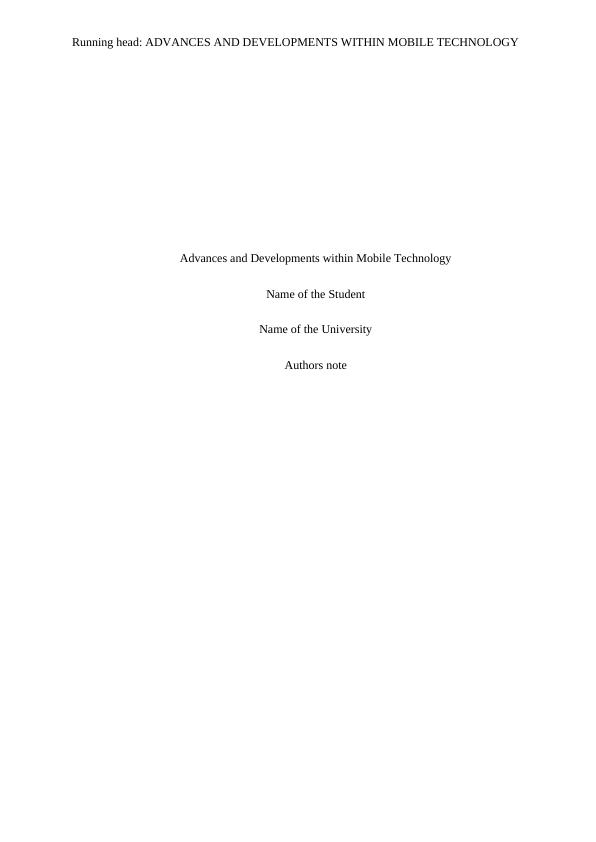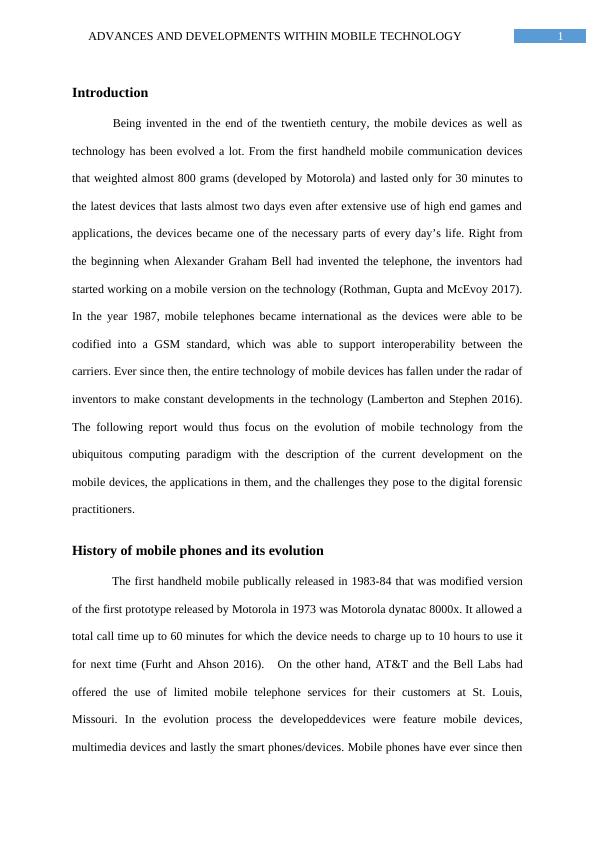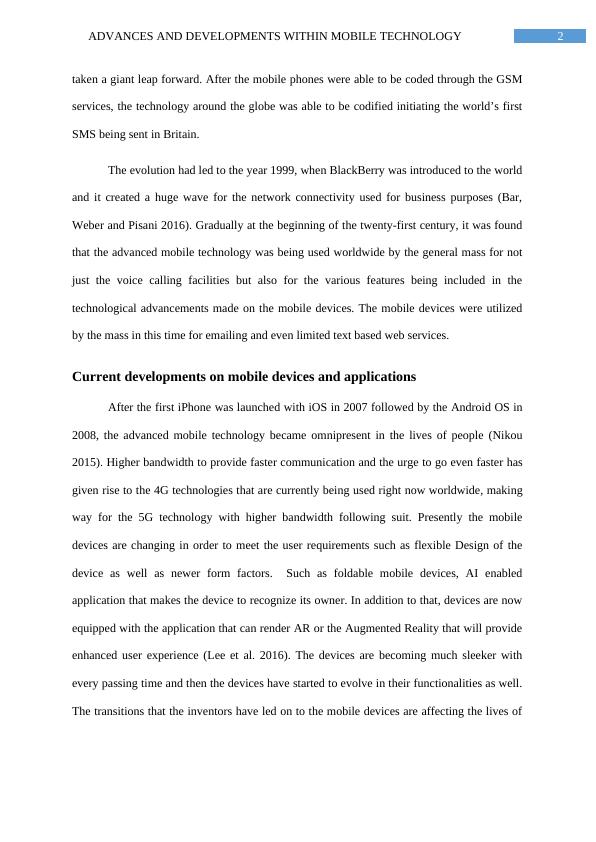Advances and Developments within Mobile Technology
This assignment assesses the critical awareness of mobile malware, infection mechanisms, and defense tools and strategies, as well as the ability to discuss and analyze forensic data stored on a mobile device. It also evaluates the knowledge and use of digital analysis tools and techniques in mobile device investigations.
Added on 2023-05-26
About This Document
Advances and Developments within Mobile Technology
This assignment assesses the critical awareness of mobile malware, infection mechanisms, and defense tools and strategies, as well as the ability to discuss and analyze forensic data stored on a mobile device. It also evaluates the knowledge and use of digital analysis tools and techniques in mobile device investigations.
Added on 2023-05-26
End of preview
Want to access all the pages? Upload your documents or become a member.



